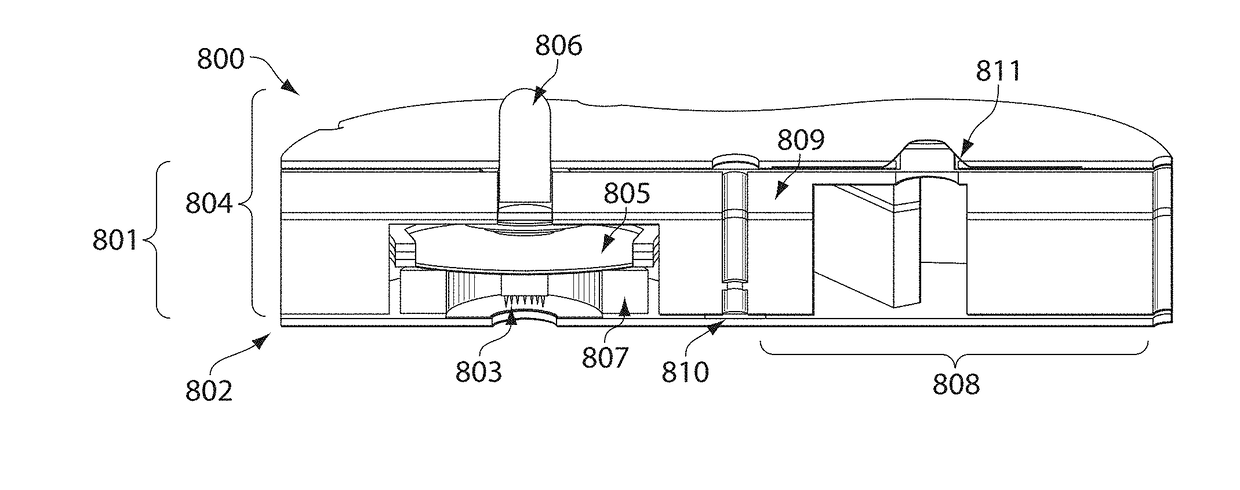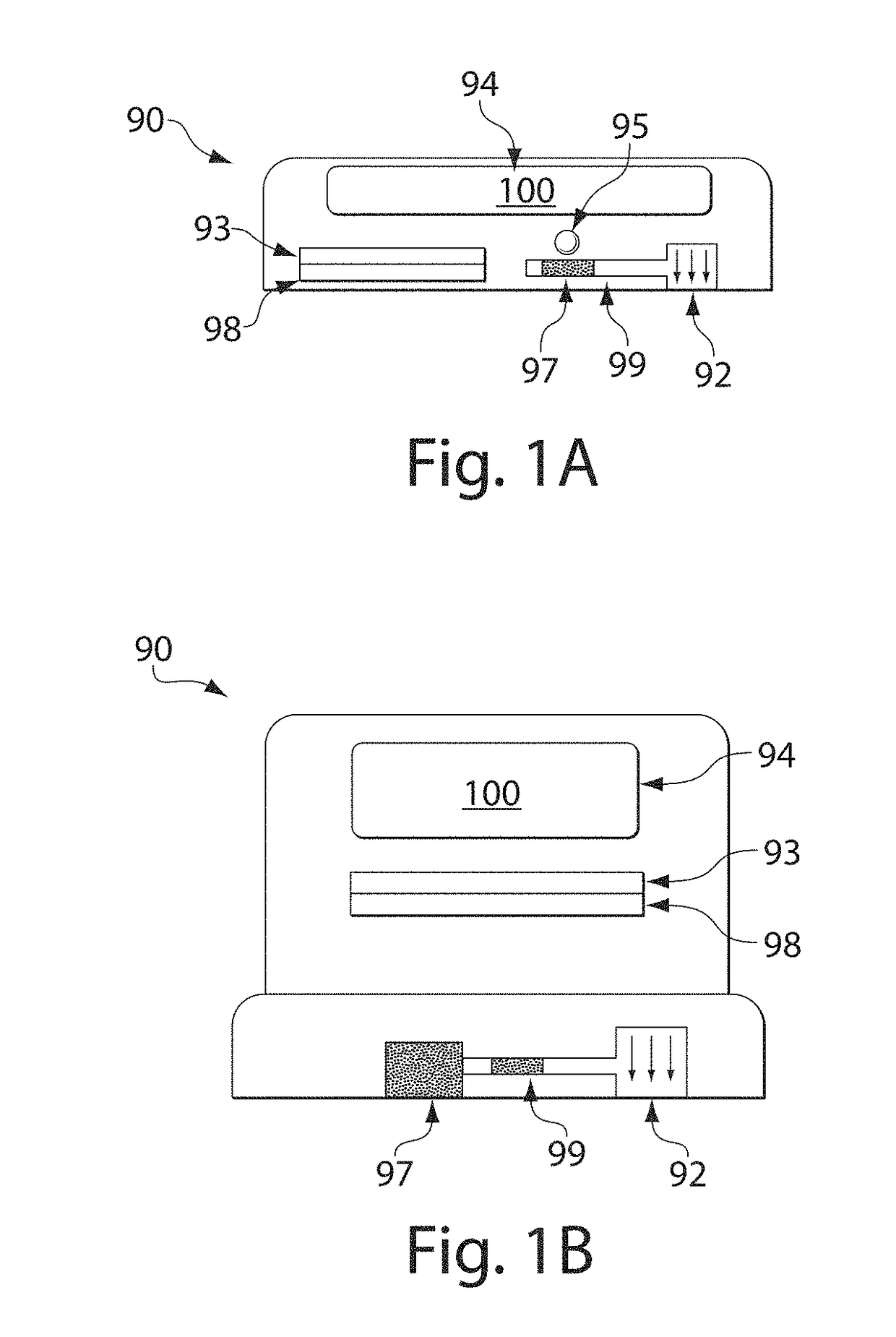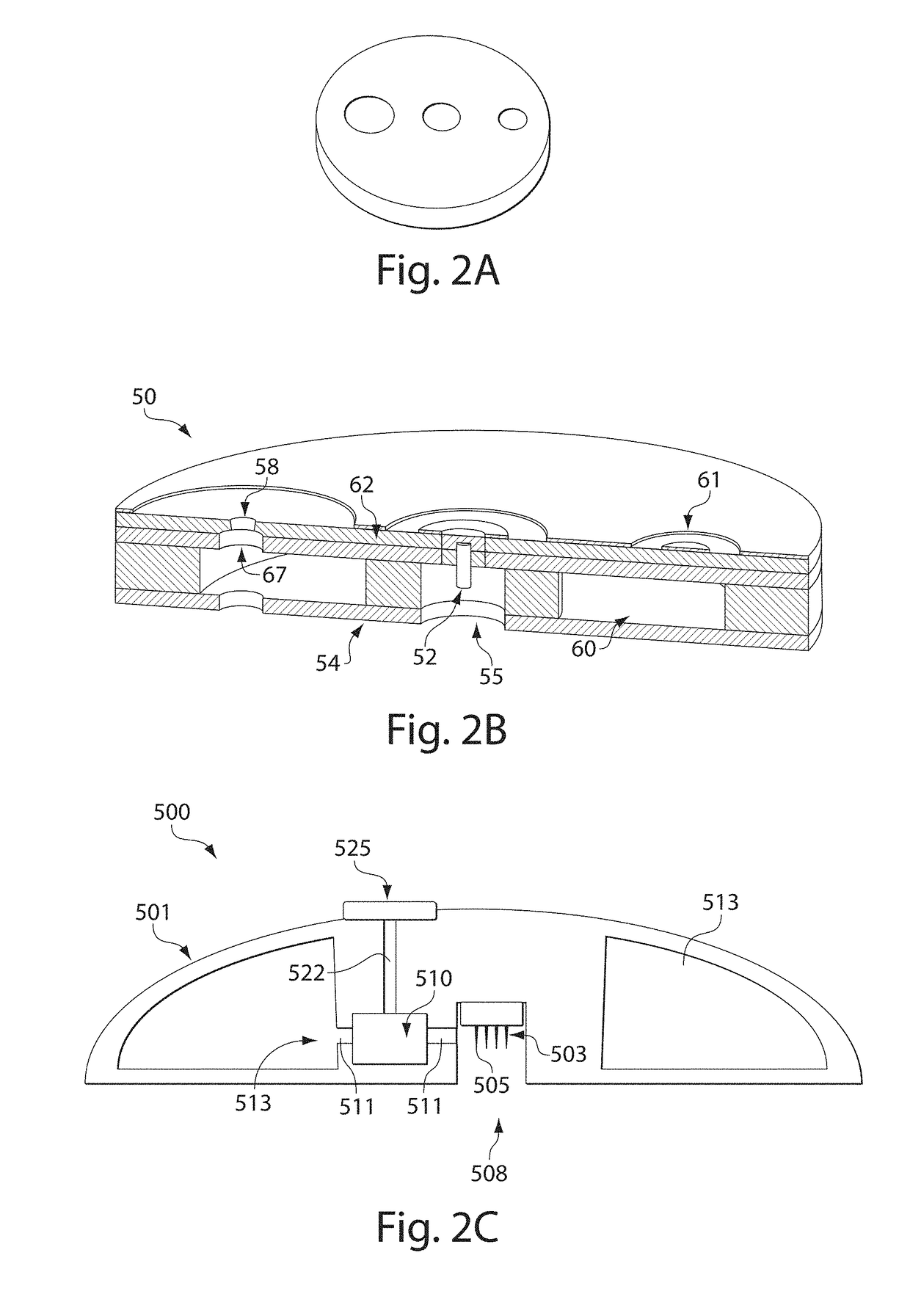Rapid delivery and/or withdrawal of fluids
a fluid delivery and fluid technology, applied in the field of fluid delivery and/or fluid withdrawal, can solve the problems of complex procedures, inability to perform non-medical settings, and require sophisticated training of practitioners, and achieve the effects of high acceleration, high energy, and speed of operation
- Summary
- Abstract
- Description
- Claims
- Application Information
AI Technical Summary
Benefits of technology
Problems solved by technology
Method used
Image
Examples
example 1
[0253]This example illustrates a device for inserting a microneedle array into the skin of a subject. FIG. 13A shows a device 800 including a fluid transporter (e.g., microneedle array 833), a reversibly deformable structure (e.g., snap dome 832), an activator (e.g., activation button 831), a retraction mechanism (e.g., silicone foam 835), and structural components constructed from multiple layers of polycarbonate bonded together using a double-sided adhesive, such as 3M 1509 or 3M 1513 tape. The microneedle arrays can be bonded to laminated post 837 on the underside of a snap dome. Structural components 838, as well as post 837, are formed from polycarbonate and 3M 1509 or 3M 1513 adhesive. The arrays may range in needle number (4 to 28 needles), needle length (350 to 1000 micrometers), and / or arrangement (square, rectangular, and circular arrays), with array footprints of less than 3 mm in diameter, where the “footprint” is the area of the base to which the needles are attached.
[0...
example 2
[0255]This example illustrates a device for withdrawing blood using vacuum. This device is shown in FIG. 13B. This device includes a vacuum chamber comprising layers of polycarbonate, polyethylene terephthalate glycol (PETG), and silicone bonded together using a double-sided adhesive, such as 3M 1509 or 3M 1513 tape. The chamber is approximately 2.7 cm in diameter and 0.6 cm high, with cup opening 858 in the base that ranges from 3 to 7 mm in diameter. The vacuum chamber may be attached to the skin of a subject over the microneedle insertion site using adhesive 857, such as 3M 1509 or Katecho 10G hydrogel. A vacuum source (i.e., vacuum pump, syringe, vacuum reservoir, etc.) can be connected to the chamber using hypodermic needle 859 inserted through silicone layer 852, and vacuum (i.e., 30 to 70 kPa) may be applied to the site for a fixed period of time (i.e., 10 s to 10 min). The application of vacuum causes blood to flow from the skin punctures into the vacuum chamber.
example 3
[0256]In this example, a fully integrated device was constructed for the withdrawal of a fluid from human subjects. A diagram of the device is shown in FIG. 13C. In this example, the integrated device 800 includes a support structure 801 for application to the skin of the subject. The structure is constructed from multiple layers of polyethylene terephthalate glycol (PETG). These layers may be formed into the requisite geometry by machining sheet stock or injection molding. The individual layers are bonded together using double-sided adhesive, such as 3M 1513 tape, but may also be bonded using non-adhesive methods such as ultrasonic welding or laser welding. The support structure is attached to the skin of a subject using an adhesive 802, such as Katecho 10G hydrogel.
[0257]The left side of the support structure in FIG. 13C houses the components necessary to insert a microneedle array into the skin. These components include a circular microneedle array of sixteen 750 micrometers long...
PUM
 Login to View More
Login to View More Abstract
Description
Claims
Application Information
 Login to View More
Login to View More - R&D
- Intellectual Property
- Life Sciences
- Materials
- Tech Scout
- Unparalleled Data Quality
- Higher Quality Content
- 60% Fewer Hallucinations
Browse by: Latest US Patents, China's latest patents, Technical Efficacy Thesaurus, Application Domain, Technology Topic, Popular Technical Reports.
© 2025 PatSnap. All rights reserved.Legal|Privacy policy|Modern Slavery Act Transparency Statement|Sitemap|About US| Contact US: help@patsnap.com



